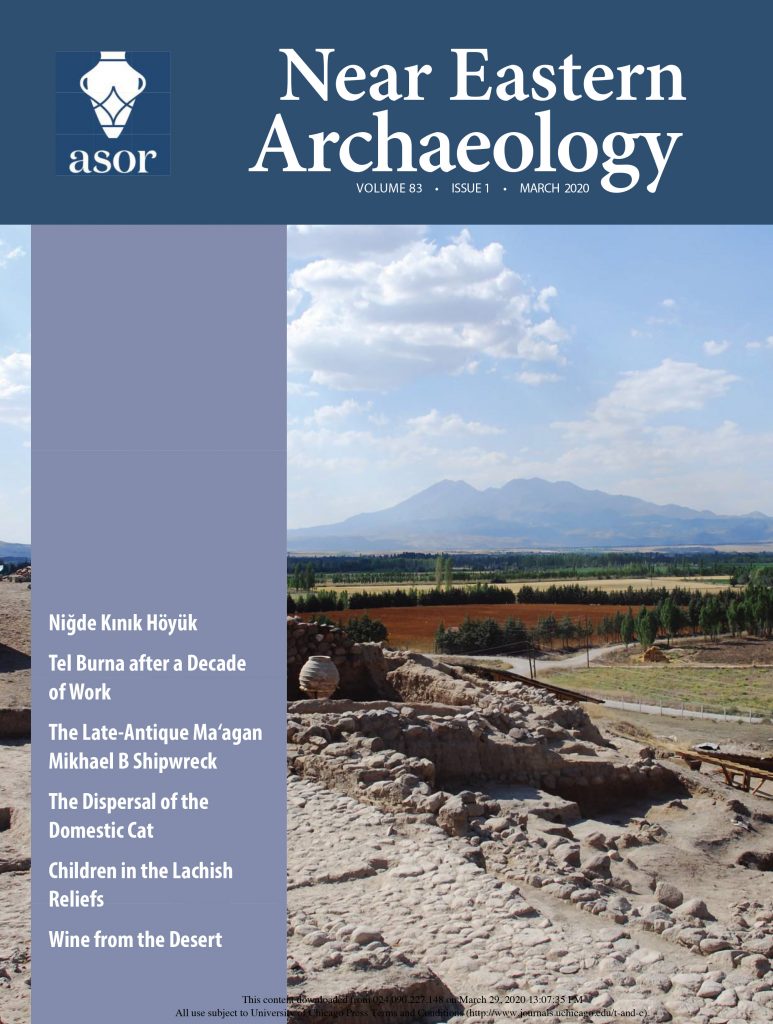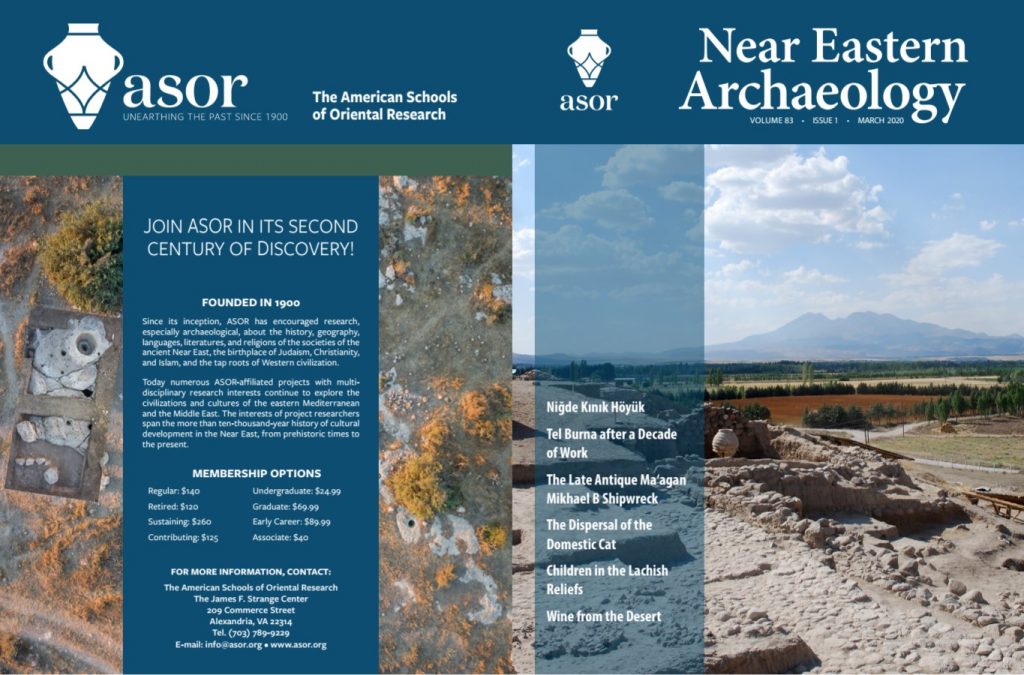Kınık Höyük on the cover of the first issue of Near Eastern Archaeology 2020

The cover of the current issue of Near Eastern Archaeology features a view of the ongoing excavations at Niğde-Kınık Höyük (N-KH) under the volcanos of south Cappadocia, Turkey.
The cover is an introduction to an article featuring the main results of the nine-years excavations for the beginning and the end of the first millennium BCE. The excavations at N-KH are a collaborative research project of Pavia University and ISAW, New York University, directed by Lorenzo d’Alfonso and co-directed by Burak Yolaçan (Dokuz Eylul University, Izmir). An international team consisting of field archaeologists, specialists, and students from Turkey, Italy, the US and beyond have been excavating this monumental mound site since 2011.
There is evidence at the site for an occupation dating from the early 3rd millennium until the Late Hellenistic period. Recent work on the 1st millennium BCE period occupation has demonstrated that during the Early Iron Age, the settlement continued to exhibit a remarkable degree of socio-political complexity. Characterized by a fully-fledged urban plan, the settlement continued to develop from both a reorganization of the previous Hittite period and local traditions, providing the first clear case of continuity in socio-political complexity in Central Anatolia after the fall of the Hittite empire. Furthermore, this complexity continued into the second half of the first millennium. Excavations have brought to light the remains of an important cultic centre in the Achaemenid and Hellenistic periods, complete with a substantial plaza area, a sanctuary, and a large assemblage of statuary and votive objects which merge both Classical and local Anatolian religious traditions. The new findings at N-KH thus provide key insight into how polities of central Anatolia, both survived the collapse of the Hittite Empire and later transformed and flourished in the wider Classical World.
Two faculty members of the Master in Ancient Mediterranean World are co-authors of the paper published in the journal:
Lorenzo d’Alfonso is an Associate Professor of Archaeology and history of ancient Western Asia at ISAW-NYU and at Pavia University. He has directed the N-KH Archaeological Project since 2011.
Maria Elena Gorrini is an Associate Professor of Classical Archaeology at Pavia University. She is in charge of the study of the Hellenistic terracotta figurines from N-KH.


